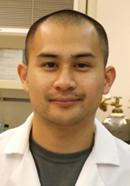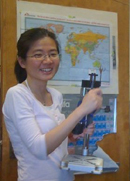People
 |
Michael Cima
Sumitomo Electric Industries Chair
MIT Professor of Materials Science and Engineering
Ph.D. 1986 University of California at Berkeley
Dr. Michael J. Cima is the Sumitomo Electric Industries Chair and MIT Professor of Materials Science and Engineering with an appointment at the Koch Institute for Integrative Cancer Research. He earned a PhD in chemical engineering from UC Berkeley in 1986. Prof. Cima joined the MIT faculty in 1986 and was promoted to full Professor in 1995. He was elected an American Ceramics Society fellow in 1997, appointed as the Lemelson-MIT Program faculty director in 2009, and elected to the National Academy of Engineering in 2011.
Prof. Cima is author/co-author of over 200 peer-reviewed scientific publications and 37 US patents. He is actively involved in materials and engineered systems for human health improvement. His research concerns advanced forming technology such as for complex macro and micro devices, colloid science, implantable MEMS and other micro components that are used for drug delivery and diagnostics.
Through his consulting work Prof. Cima has been a major contributor to the development of high throughput systems for discovery of novel crystal forms and formulations of pharmaceuticals. Prof. Cima is also co-founder and a director of MicroChips Inc., a developer of microelectronic-based drug delivery and diagnostic systems. He was senior consultant and part of the management team at Transform Pharmaceuticals Inc., a company that he helped start and that was ultimately acquired by Johnson and Johnson Corporation. He is a co-founder and director at T2 Biosystems, a medical diagnostics company. Most recently, Prof. Cima co-founded Entra Pharmaceuticals, a specialty pharmaceutical company, and Taris Biomedical, a urology products company.
mjcima[at]mit[dot]edu |
 |
Jay Sy
Postdoctoral Associate, Cima and Langer Labs
Ph.D. Georgia Institute of Technology and Emory University 2011
Jay completed his Ph.D. in Biomedical Engineering at the Georgia Institute of Technology and Emory University. His dissertation work focused on synthesizing new drug delivery vehicles for treating cardiac dysfunction following infarction. Fellowships from the National Science Foundation and Department of Homeland Security funded Jayís doctoral work. Prior to his time in Atlanta, Jay spent a year working at Vanderbilt University where he developed nanofibrous polymer scaffolds using electrospinning. He earned a bachelorís of science in engineering at the University of Pennsylvania in the bioengineering department with a focus on materials science. Jay is pursuing a career in academia and aspires to run his own biomaterials research lab in the near future.
Jay has been working on synthesizing polymers and compounds to increase the efficacy of brain drug delivery devices. He is currently implementing responsive membranes into microchip devices to regulate the release rate of a drug in response to biological cues. Jay is also working on developing compounds that modulate cerebrospinal fluid dynamics in order to increase residence time in the brain. These platforms will be applied towards treating rodent models of glioblastoma multiforme.
|
 |
Negar Tavassolian
Postdoctoral Associate
Ph.D. Georgia Institute of Technology 2011
Negar received the B.S. and M.S. degrees in electrical engineering from Sharif University of Technology, Tehran, Iran, and McGill University, Montreal, Canada, in 2003 and 2006, respectively. She received the Ph.D. degree in electrical engineering from Georgia Tech, Atlanta, GA in 2011 where she worked on characterizing dielectric charging effects in MEMS (Micro-electromechanical) switches.
Negar joined the Cima Lab in August 2011, where she is working on devices for monitoring tissue oxygenation in compartment syndrome patients and non-invasive rapid determination of hydration state.
|
 |
Leonard Rigione
Cima Lab Technician
Lenny has helped and guided numerous Cima lab grad students and postdocs with our myriad analytical and processing equipments. When not in lab, he rides his bike to raise money for cancer research through the Pan-Mass Challenge.
|
 |
Byron Masi
Graduate Student
B.S. Johns Hopkins University 2007
After growing up in Seattle, WA, Byron attended Johns Hopkins University where he received a B.S. in Chemical and Biomolecular Engineering. He is currently a graduate student in the Chemical Engineering
Department at MIT.
Byron's thesis work focuses on developing a miniaturized (mm-scale) implantable drug delivery device that utilizes MEMs technology to achieve on demand, variable release of one or multiple therapeutics.
|
 |
Yoda Patta
Graduate Student
S.M. MIT 2008
Yoda grew up in New Jersey and attended Rutgers University before moving to Indonesia to finish up college. She obtained a Master's degree from MIT in 2008 with a thesis on high temperature superconducting films. She has also served as a teaching assistant in the Department of Materials Science and Engineering at MIT for 3.022 (Microstructural Evolutions in Materials).
Yoda's research focuses on passive reservoir-based drug delivery devices, the distribution of chemotherapeutics delivered into the brain using these devices, and the relationship between distribution and efficacy against a rodent tumor model.
|
 |
Hongye Maple Ye
Graduate Student
B.S. University of Michigan 2007
Maple is a Harvard-MIT Health Science and Technology MEMP graduate student and majored in Biomedical Engineering at the University of Michigan, Ann Arbor. She hails from Singapore and loves to travel.
Maple is working on a drug delivery device for the treatment of ovarian cancer. Ovarian cancer is one of the most common cancers in females in the United States. The current state treatment requires repeatedly injecting 2 litres of chemotherapeutics via a catheter over several weeks. The catheter creates a high risk for potentially fatal infections. This project will develop a device that can be implanted in the peritoneum once, and deliver a lower dose of the drugs locally over a long time period with the same or superior efficacy than the current treatment regimen. This would reduce infections and complications for patients.
|
 |
Qunya Ong
Graduate Student
B.S. University of Michigan 2007
Qunya is currently in her fourth year in the HST MEMP program. She is from Singapore and graduated with a Bachelor's degree in Biomedical Engineering from the University of Michigan, Ann Arbor.
Qunya is working on the local delivery of steroids for the treatment of brain tumor-associated edema. The focus of her research is to design a device that would deliver concentrated doses of glucocorticosteroids locally to the brain and to demonstrate the efficacy of this steroid delivery device in an animal glioma model.
|
 |
Kevin Spencer
Graduate Student
B.S. University of Illinois at Urbana-Champaign 2010
Kevin is a graduate student in the Department of Materials Science and Engineering. He grew up in the suburbs of Chicago and obtained a BS in Materials Science from the University of Illinois at Urbana-Champaign. When not in lab, Kevin can usually be found watching sports (go Cubs), outside playing frisbee, or rocking out at a local concert.
Kevin's research focuses on developing an implantable drug delivery device for the treatment of glioblastoma multiforme. He is working on investigating combination therapies as well as novel methods to improve drug distribution in the brain.
|
 |
Daniel Montana
Graduate Student
S.B. MIT 2011
Dan is a first-year Materials Science graduate student. He graduated from MIT with an S.B. in Materials Science in 2011, earning the Outstanding Senior Thesis Award for his work on "Magnetic microparticle trapping and mechanical excitation using domain walls in magnetic microstructures." He moved all the way from Building 4 to the Koch Institute to pursue his graduate research.
Dan's research is inspired by the fact that many clinically important analytes, like viral particles and circulating tumor cells (CTCs), exist at vanishingly small quantities in blood samples. The concentrations may be so small there is a statistical chance of having no target analyte in any given sample, making early detection of disease difficult and impeding the tailoring of ongoing treatment to patient response. His research will seek to develop a novel method of detecting low concentrations of viral particles and CTCs by introducing a new technology to an existing medical procedure. This approach will effectively sample large volumes of blood and vastly change the statistics of analyte quantitation.
|
 |
Joan Fernandez Esmerats
Visiting Student
Currently attending Institut Quimic de Sarria, Spain
Joan is a visiting student from Spain and is a mechanical engineer with minors in materials science and structural design. He has been working in the Materials Science and Engineering department at his home university for two years. He has also been teaching for 5 years and enjoys it; his goal in life is to work in academia.
Joan is part of a team that works on the development of a novel device that will allow the detection of very low quantities of HCV in blood. The current tests available have a threshold that they want to lower in order to help reduce the collateral effects of drug treatment to patients and also to reduce the cost of the treatment.
|
Lab Alumni
Urvashi Upadhyay, MD, postdoc/visiting researcher 2011
Now a neurosurgical resident at Brigham and Women's Hospital
Jennifer Shepherd, PhD, postdoc 2011
Now a senior scientist at 3M Company
Alex Scott, SM 2010
Now a PhD candidate at Northwestern University
Yibo Ling, PhD 2010
Now at Boston Consulting Group
Irene Tobias, SM 2008
Now a PhD student at University of California, San Diego
Hong Linh Ho Duc, PhD 2009
Heejin Lee, PhD 2008
Now scientist at Taris Biomedical
Karen Daniel, PhD 2008
Now scientist at Taris Biomedical
Grace Kim, PhD 2007
Now scientist at Taris Biomedical










